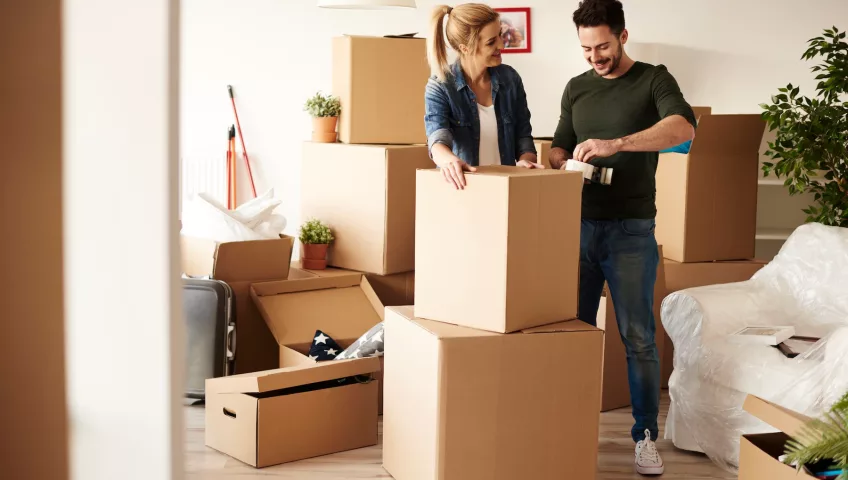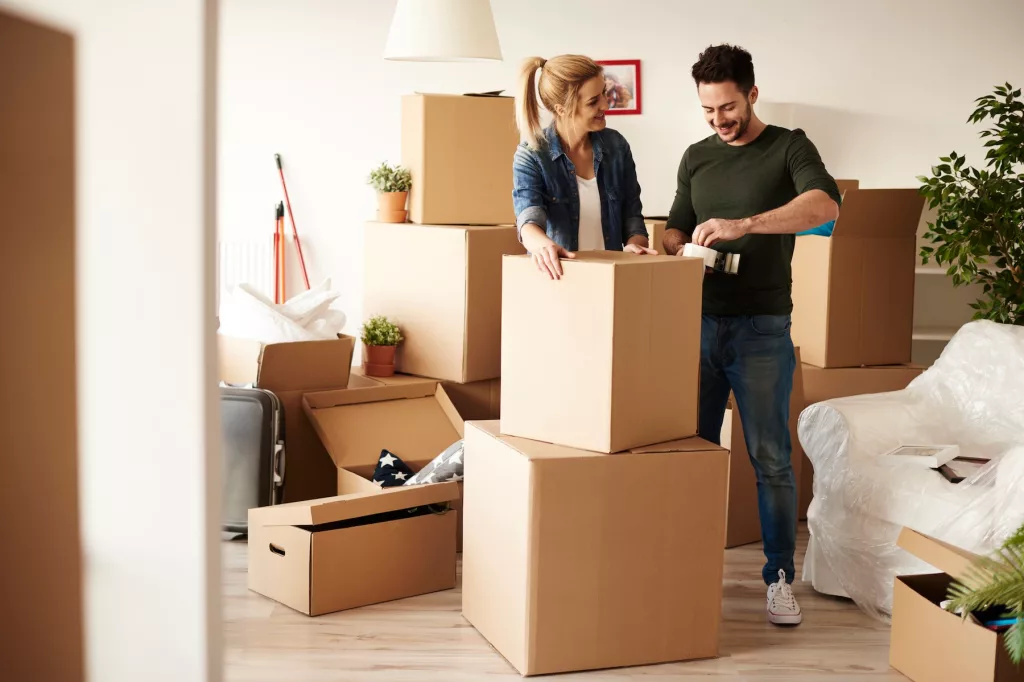
How to Downsize Effectively.
(and Transcend Moving Stress)
Are you feeling overwhelmed by the clutter in your home or longing for a simpler lifestyle?
Downsizing might be the answer you’re looking for.
Downsizing isn’t just about moving to a smaller space; it’s about optimizing your life. By intentionally letting go of unnecessary possessions and scaling down your living arrangements, you can create a space that truly reflects your priorities and provides the freedom and financial security you desire.
In this brief guide, we’ll walk you through the process of downsizing. We’ll cover everything from understanding the benefits of downsizing to planning and executing your move, as well as addressing the emotional aspects that come with downsizing.
Let’s get started…
The Why and When of Downsizing
Why Downsize?
Understanding the reasons behind your decision to downsize is crucial to guide your downsizing process. Perhaps you’re looking to achieve financial freedom, reduce the burden of home maintenance, or simplify your life. Identifying your “why” will help you stay focused and motivated throughout the downsizing journey.
When is the Right Time?
Timing plays a vital role in the success of your downsizing endeavor. Consider your life goals and identify the best time to downsize.
Are you approaching retirement and want to reduce your living expenses? Are you relocating for a job opportunity or seeking a change of scenery? Whatever the reason, aligning your downsizing plans with your life circumstances will ensure a smoother transition.
Planning Your Downsize
Setting Goals
Before diving into the downsizing process, take some time to set clear goals. Identify what you hope to achieve through downsizing.
Is it reducing clutter, cutting down on living costs, or moving to a more convenient location? Having these goals in mind will help you make informed decisions and prioritize your efforts.
Budgeting
Downsizing comes with its own set of expenses. From moving costs to potential storage fees, it’s important to plan your budget accordingly. Take into account any upfront costs involved in downsizing and include them in your financial planning. By doing so, you can avoid any unexpected financial surprises along the way.
And here’s 5 Tips for How to Save Money on Your Next Move!
Inventory Assessment
Creating an inventory of your possessions is a crucial step in downsizing effectively. Take stock of all the items you own, whether it’s furniture, clothing, or kitchenware. Use this inventory to make decisions about what stays and what goes.
Be honest with yourself about what you truly need and cherish, and be willing to let go of things that no longer serve a purpose in your life.
Choosing the Right Space
When downsizing, it’s important to consider your lifestyle needs and preferences. Are you someone who works from home and requires a dedicated office space? Or would a cozy one-bedroom apartment be sufficient?
Evaluate the features and amenities that are essential to your well-being, and choose a space that aligns with your downsizing goals.
By understanding the why and when of downsizing and planning your downsizing journey, you’ll be well-prepared to embark on this transformative process. In the next sections, we’ll delve into the execution phase of downsizing, as well as the emotional aspects that come with it.
The Execution Phase
Decluttering
When it comes to downsizing, decluttering is a crucial step in the process. Start by tackling one room at a time, as it can be overwhelming to try to declutter your entire home all at once. Use the “Keep, Sell, Donate” method to categorize your items.
Be honest with yourself about what you truly need and what you can let go of. Remember, downsizing is all about simplifying your life and only keeping what brings you joy and adds value.
Selling and Donating
Once you have identified the items you no longer need, you have a few options for getting rid of them. Consider selling valuable items online using platforms like eBay or local classifieds.
Take high-quality photos and write detailed descriptions to attract potential buyers. Not only can this help you make some extra money, but it also ensures that your items find a new home where they will be appreciated.
For items that are still in good condition but don’t have much resale value, donating is a great option. Local charities, shelters, and community centers often accept donations of clothing, furniture, and household items. Not only will you be helping others in need, but you’ll also be reducing waste and contributing to a more sustainable future.
Packing and Moving
When it comes to packing for your downsizing move, it’s essential to maximize your space. Use space-saving packing methods like vacuum bags for clothes and bedding. This will help compress your items and free up more room.
Don’t forget to label your boxes clearly, so you know exactly what is inside when it comes time to unpack. Consider color-coding or using a numbering system to make the process even more organized.
Be weary of seemingly cheap removalists who have hidden fees and charges!
Read this article for our Top 10 Removalists’ Hidden Charges & How to Avoid Them!
Settling In
Once you’ve moved into your new, smaller space, take the time to arrange your belongings in a way that maximizes utility and comfort. Get creative with storage solutions to make the most of your limited space.
Consider investing in multi-functional furniture pieces that can serve multiple purposes, such as a sofa that can convert into a bed or a coffee table with built-in storage compartments. By optimizing your space, you’ll be able to enjoy a clutter-free and functional living environment.
Emotional Aspects of Downsizing
Coping with Change
Downsizing can bring up a range of emotions. It’s normal to feel attached to your belongings, as they often hold sentimental value. Acknowledge these feelings, but also remind yourself of the benefits that come with downsizing.
Focus on the newfound freedom, reduced maintenance, and financial savings that you will experience by letting go of unnecessary possessions. Surround yourself with supportive friends and family who understand your goals and can help you stay motivated throughout the process.
Building a New Routine
Moving to a smaller space often requires adjusting your daily routine. Embrace this change as an opportunity to build a new lifestyle that aligns with your downsizing goals. Take the time to create a new routine that prioritizes activities that bring you joy and fulfillment.
Use the extra time and energy you gain from having a smaller space to explore new hobbies, spend time with loved ones, or pursue personal interests. Remember, downsizing is not just about the physical act of moving to a smaller home; it’s about creating a more intentional and fulfilling life.
Downsizing is Not Just Physical.
Downsizing is a transformative process that can lead to a more simplified and fulfilling life. By understanding the why and when of downsizing, planning effectively, executing the process with decluttering, selling and donating, packing and moving, and settling in, and addressing the emotional aspects of downsizing, you can achieve a smoother transition.
Remember that downsizing is not just about physical belongings; it’s about optimizing your life and creating a space that reflects your values and goals. Embrace the change, and enjoy the benefits of a clutter-free and more intentional lifestyle.
Once you’re ready to book your move in with a top customer reviewed expert removalist reach out to BC Furniture Removals. With BC on the job you can rest assured that your valuable and fragile items will be handled with the utmost of care, and your move will be as smooth as honey…
Call BC Furniture Removals on 0422 005 390
Meet The Team Customer Reviews Our Services



